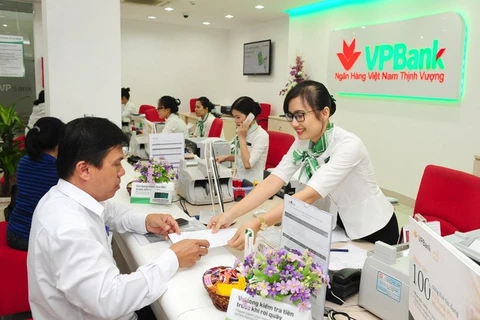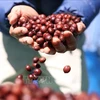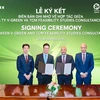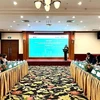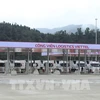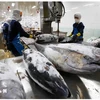Hanoi (VNA) - The idea of taxing those owning multiple houses, in a bid to prevent speculation, is causing a stir over whether such a tax is feasible, and the impact it might have on the housing market.
The market has recently been heated, following the disclosure that the Finance Ministry was studying a draft on collecting a housing tax from those owning more than one house. The idea was also raised five years ago, but rejected.
Although director of the Finance Ministry’s Department of Tax Policy Pham Dinh Thi recently said that the idea was a long-term orientation and would certainly not come into effect next year, as rumoured, it caused concerns among industry experts over its feasibility, as well as the impact it might have on the property market.
According to Le Hoang Chau, President of the HCM City Real Estate Association, taxing those owning multiple houses would be a solution to prevent speculation, as well as reducing the risk of causing market bubbles.
“The tax would help not only improve the market’s transparency, but also create opportunities for those who had real demands to buy houses,” Chau said. “How to tax properly will not be an easy matter.”
Tax-related tools to regulate the realty market have been used in many countries and territories, such as mainland China, Taiwan, the Republic of Korea, Japan, Singapore, European countries and the US.
According to Chau, Singapore was one among the countries which imposed the highest taxes on owning multiple houses, up to 7 percent on a second house and 10 percent on a third house, which came into effect in 2013.
In Japan, tax rates were 1.4 percent to 2.1 percent, and prices were set at market prices, which were reviewed every three years.
In Vietnam, there were taxes on land use, but no tax on property assets.
According to the Law on Non-Agricultural Land Use Tax, in effect from the beginning of 2013, residential land in urban areas was taxed between 0.03 percent and 0.15 percent of the Government’s land prices. A problem, however, was caused by the Government’s land prices, which were much lower than market prices, so the impact on the property market was modest.
Several property experts agreed with the idea of taxing those owning multiple houses.
According to Chau, imposing taxes on second houses would help reduce speculation and property prices would decrease as a result, forcing property developers to improve their products to meet market demands.
“With the aim of first preventing speculation, the tax would, in the long term, stablise housing prices and improve market transparency,” Chau said.
However, he noted that tax rates should be considered carefully and calculated based upon property asset values and total area.
The tax should not be applied on social houses, relocation houses and commercial houses valued at less than 1 billion VND.
“It’s important to ensure fairness,” he said, adding that finding a method to clarify ownership of multiple houses to be subject for the tax was also a matter of concern.
Economic expert Tran Du Lich said that the tax should be applied, in line with international practices. “Property asset taxes would become the major revenue of urban areas, where land is limited,” Lich added.
According to economic expert Le Ba Chi Nhan, the Finance Ministry should pay attention to that policy, if applied, since it could cause the market to become depressed if people would be hesitant to purchase another house, especially when the market was showing signs of slowing down.
Nguyen Van Duc, Deputy Director of Dat Lanh Real Estate Company, said he did not agree with the idea of imposing taxes on second house. He noted that when buying houses, buyers now pay value added taxes and land use fees, which were estimated to add 20-30 percent to the cost.
In addition, the property market of Vietnam was not transparent enough to apply this type of asset tax, he said.-VNA



